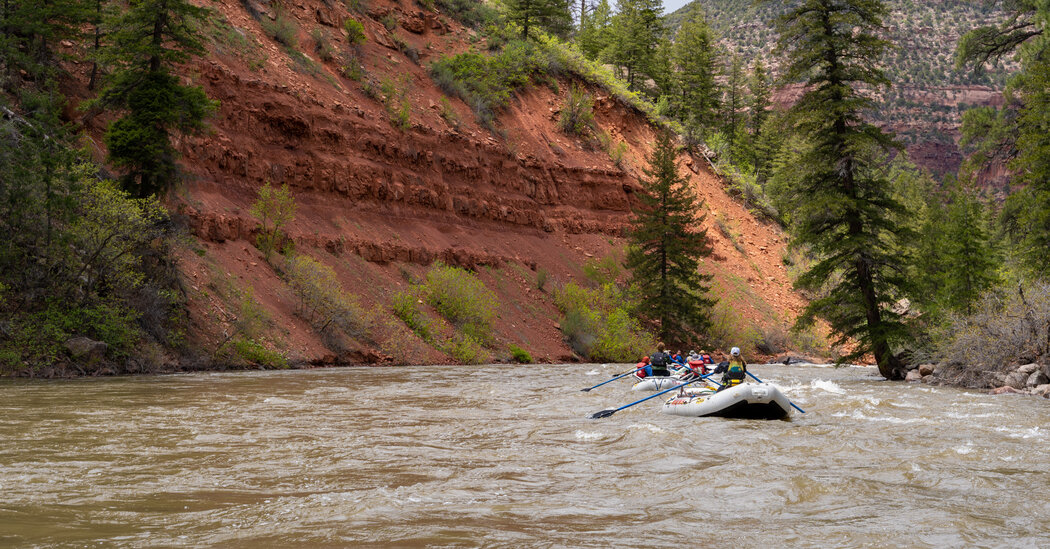Midmorning on the Dolores River, you could feel how recently the water had been snow. “It’s probably about 48 degrees right now,” our guide Samy said, as she carefully angled the boat so the paddlers in front got wet and she stayed dry in the back. The white water was splashy and rolling without being scary, but it picked up speed as we headed downstream.
We were in Colorado’s Ponderosa Gorge, along the line where the Rockies slip into the red edge of the desert. Sky-scraping pines sent off a dusty cinnamon smell, and there was a shock of new green growth on the red-rock cliffs. The canyon got deeper, redder and more angular as the day went on. I kept taking off my sunglasses to make sure the colors were real.
We were on a single-day trip with Mild2Wild Rafting, based in Durango, Colo., but from the launch where we pushed our rafts into the river, you can float for 173 miles, and 10-ish days, uninterrupted, until the Dolores, named the River of Sorrows by the Spanish explorers who came across it in 1776, runs into the Colorado River, right over the Utah state line.
In the rapid-strewn red-rock canyon, boaters float past the remnants of granaries built by Ancestral Puebloans and panels of petroglyphs and pictographs. There are bear scratches on the big ponderosas and river otters in the eddies. Threatened native fish thread up into the headwaters, and blooming fendlerbush dot the banks. The river is a ribbon of connectivity, and it carves through one of the largest untouched landscapes left in Colorado. In 1975 it was the first waterway in the state to be studied for Wild and Scenic designation.
But it’s runnable only when there’s enough water, and these days the river channel is dry more often than it’s not. Because of over-allocated water rights, McPhee Dam, upstream of the gorge, releases water only in years when there’s more than enough inflow to fulfill legal obligations to rights holders. Before this spring, the river last ran in 2019, and conditions are predicted to keep getting hotter and drier.
“Any time you can get on the Dolores it’s special,” said Alex Mickel, 53, the president of Mild2Wild Rafting. “There’s no other river I know that offers so many different environments; it makes for a pretty unparalleled multiday trip. It breaks your heart that it only runs rarely.”
My trip was in June, and the Dolores’s season was over by early July.
But after an exceptionally snowy winter across most of the West, rivers that…
Click Here to Read the Full Original Article at NYT > Travel…
